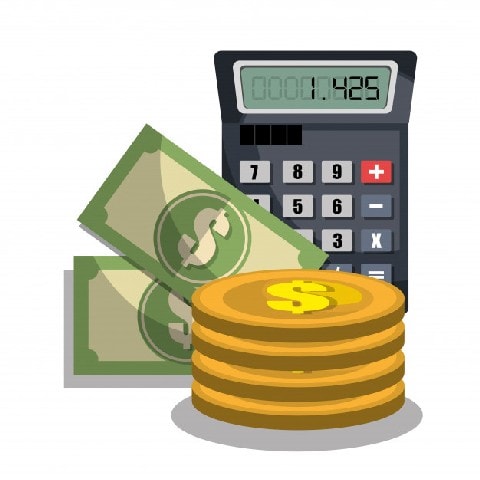The name of the title gives you an idea of what would be the topic of this article. The price of a product is one of many essential factors that decide whether the business will be successful or not. Therefore, companies give great importance in determining the price of goods and services. In this article, you will learn about different types of pricing methods, objectives of pricing methods, and factors influencing the pricing methods.
Table of Contents
Definition
The pricing methods can be defined as the techniques to decide the final price of goods and services by taking different factors, such as cost of production, the demand of the product, competition in the market, the life cycle of a product, and the vision of the organization.
Types of pricing methods
There are two broad categories of pricing methods, such as cost-oriented methods and market-oriented methods. These main categories have various subcategories depending on multiple factors. In this section, you will learn about all types of pricing methods.
A. Cost-oriented methods:
Cost-oriented or cost-based pricing method is the purest form of pricing method. In this pricing method, a certain percentage of the desired profit is added to the cost of the product to obtain the final price of the product. The cost of the product is the total cost spent on the production of the product.
The followings are the different sub-categories of cost-oriented pricing methods.
1. Cost Plus Pricing:
The cost-plus pricing method is the simplest, and the price of goods using this method is determined by following the most basic idea behind the concept of business. The idea is that a businessman produces and sells a product to generate profit from it.
The price of goods using a cost-plus pricing method is determined by adding the unit cost of production with a certain percentage of the value.
The advantage of using this method is that it covers all the costs of production and provide a consistent return on investment, whereas, the disadvantages of using this method is that it does not take into consideration the consumer of the product and the competition in the market.
2. Mark-up pricing:
Mark up pricing can be determined by adding the cost of a product with a certain percentage of markup to determine the final price of goods or services. The markup value of a product is the amount of profit the company wants to earn by selling the product. To determine the markup price of a product, the company first should specify the exact total cost of production of a product and mark up value.
The formula to calculate the markup pricing is as follows:
Markup pricing = Production cost + markup cost
The formula to calculate the markup value is as follows:
Markup value = Unit Cost / 1 – Desired Return on Sales
The advantage of using a mark-up pricing method is the easiness of the calculation of the final price of the product. Moreover, because of its simplicity, most companies use this method to decide the final price of the goods and services. Therefore, there are very few chances that the difference between the price of the goods will take place. That means all companies will sell a product at a similar price.
However, there are a few disadvantages also associated with this pricing method is that while deciding the price of the product companies ignore the demand of the product in the market and the competition in the market, which are two important factors in deciding the price of goods.
3. Target return pricing:
Target return pricing is a type of pricing method in which companies plan to achieve a certain level of return on investment by selling a particular quantity of goods.
The formula to calculate target return pricing is as follows:
Target Return pricing = Unit Cost + ( Desired Return * Invested Capital ) / Unit Sales
The advantage of using target return pricing is that it is easy to calculate and understand. Moreover, with target return pricing, the company can decide the level of effort of the whole team as a unit required to generate a certain percentage of profit.
The limitation associated with the target return pricing method is the accuracy to calculate the estimated amount of sales.
4. Break-Even pricing:
Let me explain to you what is the breakeven point before we get to break-even pricing. The breakeven point is a point where a company is neither generating profit nor losing any money. That means the total revenue generated is enough that it covers all the fixed as well as variable costs of the production of goods or services. Click here if you want to learn more about breakeven point and breakeven analysis. It is easy to understand breakeven pricing after learning about the breakeven point.
The breakeven price is the price decided by the company to cover all fixed and variable costs incurred in the business. That means the company plans to reach the breakeven point as soon as possible. So that they neither make profit nor loss.
5. Early cash recovery Pricing:
The early cash recovery pricing method is concerned with the early recovery of total investment in the business. This pricing strategy is adopted by those businesses who are aware of the short life of the market or when they are dealing with fashion-related products or the products which are technology sensitive.
For example, the life of smartphones is concise because every few months, a new smartphone with updated features is introduced in the market. Because of this, the lifespan of smartphones is very short in the market.
Sometimes, small or new companies also use this pricing method when they enter the market with a new concept or idea. They want to recover their investment before a large company comes the market with lower prices and give fierce competition to small companies. To avoid such situations, these companies decide the final cost of their products in such a way so that they can maximize their revenue generation in a short period.
Because of this reason, the price of a new product is usually quite high, and after some time, you can buy the same product from the same or different companies at lower prices.
B. Market-Oriented Pricing Methods
The market-oriented pricing method or market-based pricing method is also known as a competition-oriented pricing method. The cost of goods and services is decided as per the current conditions of the market in a market-oriented pricing method.
That means companies determine the price of the goods and services by taking into consideration the cost of the product and services of their competitors. They determine the price either the same as the price of their competitor or close to the amount of the products of their competitor.
The market-oriented pricing method can be divided into different sub-categories.
The followings are the sub-categories of market-oriented methods
1. Perceived Value Pricing
The perceived value pricing method works on the image of the product in the eyes of its customers. Most companies decide the price of their product depending on its value perceived by customers.
The customers will be willing to pay a high price if they think highly of the product. Various factors are considered into deciding the perceived value pricing such as the image of the brand, trustworthiness of the brand or company, the reputation of the supplier, customer support services, warranty of a product, and the previous experience of customers. Take the example of Apple’s product.
The company charges high prices for its products and customers pay any amount charged by the company willingly because of the reputation of the brand and experience of customers with Apple’s products. The benefit of adopting the perceived value pricing method is the increased amount of profit, whereas the limitations of using this method are that it makes customers suspicious that the company might have hiked its price and the company might miss price-conscious customers.
It is good to adopt this method only if a company is offering price worth features and qualities in the product.
2. Sealed bid Pricing
The sealed bid pricing is different from other types of pricing methods. The sealed bid pricing method is used in case of large orders. The seller submits sealed bid pricing to get the contract or work. This type of pricing method is used to get the agreement of a job from big industries or government.
Let us understand how a sealed bid pricing method works.
The government or a large organization advertises for the bulk of products for a particular work. In response to this advertisement, different organizations submit a sealed quotation or bid.
The buyer selects the seller with the lowest prices and excellent services. The buyer expects his job to be done at the lowest price. Therefore, to win the contract, the seller is required to anticipate the bid value of its competitors and sends in the cost more economical than their value.
3. Differentiated Pricing
The differentiated pricing is the pricing where the same product or service is sold at different prices. The difference in the cost of the product or service is made based on various factors. Based on these factors, differentiated pricing is further divided into four different categories.
The followings are the subcategories of differentiated pricing
1. Time Pricing
The time pricing method works depending on the time of the year when the product is sold. In the peak season, a product is sold at full price, and the same product is sold at a lowered amount in the offseason.
For example, the cost of Christmas decoration stuff is highest near the Christmas festival and the same thing is sold at a reduced price after the festival season. Similarly, winter clothes are sold at hiked prices at the start of the winter season and the same garments are sold at lowered prices or sale at the end of the season. The companies do this to clear their stock.
2. Customer Segment Pricing
In customer segment pricing, different groups of customers are charged different prices for similar products or services. This pricing method works on various factors, such as the economic level of customers, size of the order, etc.
For example, companies usually sell goods at lower prices when bought in bulk quantity.
3. Product Form Pricing
Under the product form pricing method, the different versions of goods are charged differently. For example, the price of different quantities of cooking oil is different and is not decided proportionately.
For example, the price of a 250ml oil bottle is $25 whereas the cost of a 1L bottle is $40.
4. Area Pricing:
The area pricing method works depending on the area where the product is sold. For example, a company might sell a product at a lower price in a new market to attract new customers.
Sometimes, products are sold at high prices in developed countries as compared to the underdeveloped countries by keeping the economic conditions of people of those countries.
5. Going Rate Pricing:
The cost of goods and services using a going rate pricing method is decided based on the price set by the major companies in the market. The small companies change the cost of their products or services when their giant competitors change the price.
In the going rate pricing method, it is considered that a few companies rule the market, and other companies are bound to follow the pricing strategies of these companies to stay in business. The going rate pricing method can be divided into different categories. Let us learn about them too.
The going rate pricing can be sub-divided into further sub-categories
1. Discount Pricing
In the discount pricing method, the small companies charge less price as compared to the cost of the goods of their competitors as they lack the features provided by the competitors.
2. Competitors’ parity method
Using competitors’ parity pricing method, a company sets the price of its products the same as the price of the outcome of its competitor company. Companies use this method to attain a market share of already established companies.
3. Premium Pricing
A company charges a little higher price than its competitor companies by providing additional features or by providing other services.
Objectives of pricing methods:
- Maximum Profit Generation and return on investment.
- To increase market share and strengthen the position in the market.
- To make better use of competitive positioning.
- Give competition to the competitors.
- Long life of the company in the market.
- Attain price stability.
Factors influencing the Method of Pricing
The following are the factors that influence the method of pricing of a company.
1. The competition in the market
The competition in the market is one of the main reasons which affects the pricing decision of a company. The company is required to take into consideration the pricing policies of its competitors to stay in the market. Setting too high a price or too low price is not suitable for the companies.
2. The demand for the product
The demand for a product influences the demand for the product. A company can sell its products at the desired price when the demand is high. For example, stores sell decoration stuff at a high price near the Christmas season.
3. Government policies
Government policies also affect the cost of products produced by both private and government-owned organizations. By applying government policies to regulate the price of products, the government makes sure that companies don’t charge arbitrary prices of commodities.
4. Market share of the company in the market
Companies also decide the cost of their products depending on their market share. For example, if a company has a large share in the market, then it can charge the desired price for the product without bothering about the pricing strategies of its competitors.
Companies with significant market share are referred to as leading companies. Leader companies hold the power to influence the price of products and companies with small market share follows the footprint of these leader companies.
5. The life cycle of the product
More prolonged the life cycle of a product higher will be its price and vice versa.
6. Economic conditions
Economic conditions affect the income of people living in the country. An excellent economic condition means the income level of people is right, and they can afford high prices. Under poor economic conditions, companies are forced to drop the cost of their products. However, this pricing factor affects more the goods used for day to day use.
7. Product differentiation
Product differentiation is made by companies to sell the same product at different prices by making a little bit different in their features to target different market segments.
Are you looking for insights into effective pricing strategies?
To add an extra layer of insight, let’s consider some quick statistics from recent market analysis. According to a 2023 report by Statista, businesses that utilize a mix of market-oriented and cost-oriented pricing strategies typically see a profit margin increase of about 5% within the first year. This data highlights the importance of carefully selecting a pricing strategy that aligns with both consumer expectations and competitive positioning in the market. Companies adopting flexible pricing models have managed to stay resilient in various economic conditions, supporting long-term growth.
Additionally, some recent industry insights emphasize the growing importance of dynamic pricing models. A study featured in Harvard Business Review in 2023 suggests that incorporating AI-driven pricing tools can optimize revenue by up to 30%. These tools evaluate multiple data points in real-time, like competition pricing, consumer behavior, and market demand. Such advancements have made it increasingly viable for businesses, across sectors, to maintain competitive pricing while maximizing profitability.
Liked this post? Check out the complete series on Pricing




Why are marketing channels said to “minimize the numbers of transactions” between manufacturers and end-users?